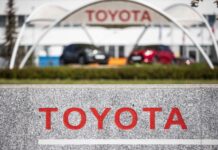Stellantis NV set a goal to maintain double-digit returns through the end of the decade by cutting costs and deriving extra revenue from new services as the automaker speeds up its electrification push.
Adjusted operating income margin will exceed 12% by the end of the decade, while net revenues are set to double to 300 billion euros ($334 billion), Stellantis said Tuesday. The carmaker last week reported a return for 2021 that soared to 11.8% after getting past supply snarls and labor shortages with production of more profitable vehicles.
“We are activating all the levers to reach an even better level of efficiency,” Stellantis Chief Executive Officer Carlos Tavares said during a presentation in the Netherlands. “We’ll continue to be the most efficient automaker with respect to capital spending.”
Efforts across engineering, supply chain and purchasing teams are wringing costs from operations to make the company 30% more efficient on capital expenditures and development spending than the rest of the industry, Tavares said. He’s also trying to cut distribution costs by 40% by digitizing sales and marketing operations.
The plan comes a little over a year after the mega-merger between Fiat Chrysler and PSA Group to form a sprawling manufacturer across 14 brands with nameplates like Jeep, Ram and Fiat to add scale in the EV and autonomous driving shift. Since then, Stellantis has faced head on unprecedented shortages of semiconductors and remaining challenges from the pandemic.
Extra Revenue
Tavares has mapped out a push to plow 30 billion euros into electric cars and software, including more than 75 fully-electric models by 2030 with annual sales of 5 million vehicles. While the carmaker is spending big on the rollout, it’s pledging to maintain strong returns, relying on extra revenue from software and services as well as premium vehicles.
Stellantis will lean on partnerships with Foxconn Technology Group, Waymo and BMW AG and has said it plans to generate about 20 billion euros in extra revenue from software-driven features in its vehicles by the end of the decade.
After early successes to deliver on a pledge for synergies of 5 billion euros as part of the merger, Tavares said the manufacturer will achieve its goal in 2024, more than one year ahead of schedule.
Stellantis also upped a target for electric vehicle sales, planning to switch all deliveries to plug-in hybrids and battery-powered cars in Europe by 2030, up from a previous goal of more than 70%. For the U.S., the manufacturer now plans half of all sales to be electric, compared with more than 40% before.
–By Tara Patel and Gabrielle Coppola (Bloomberg)
Source : AutoFinanceNews













